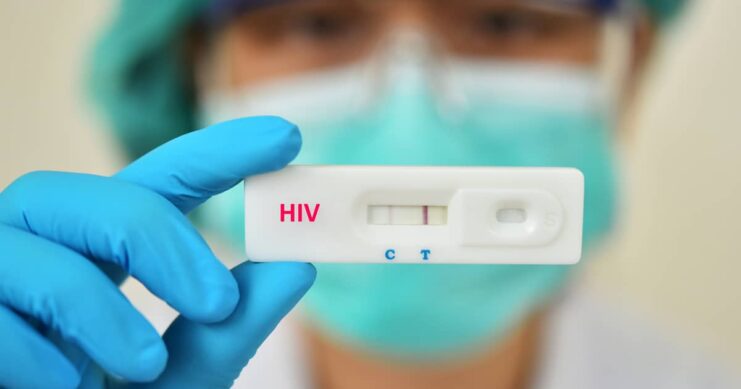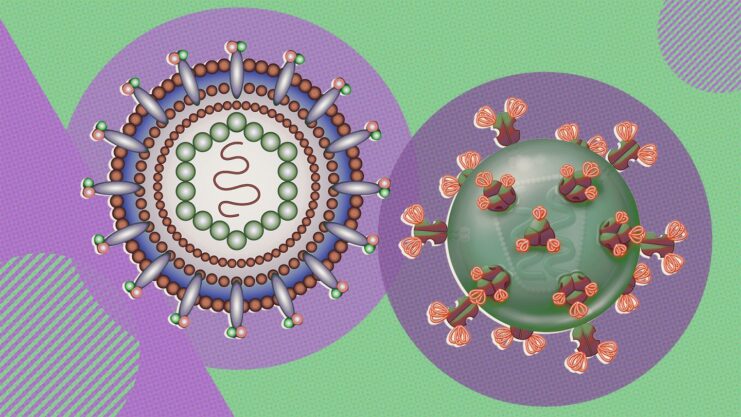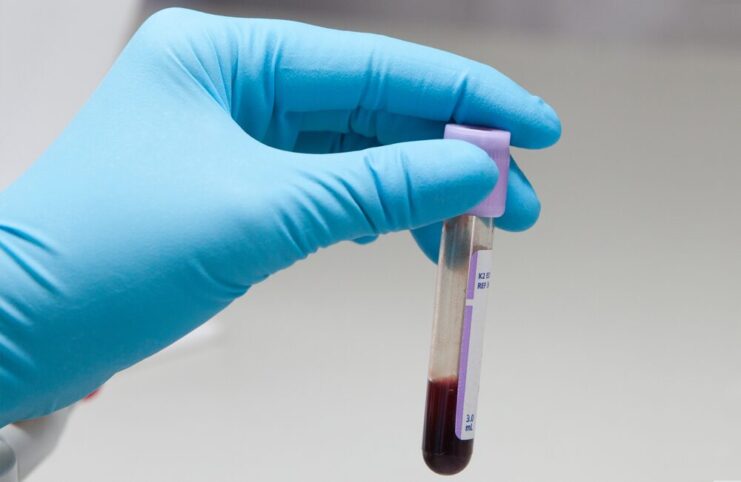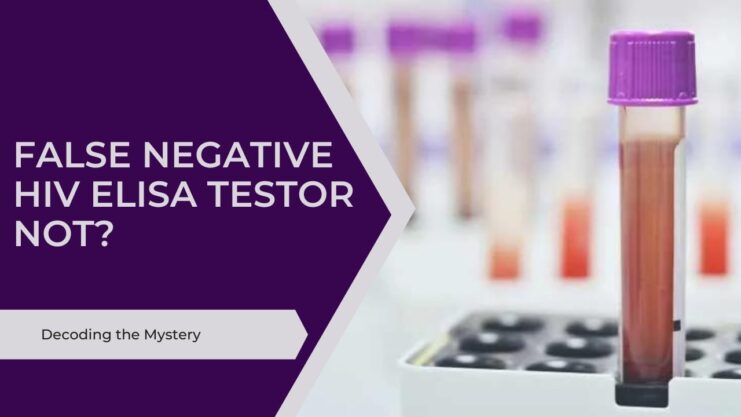The question of False Negative HIV ELISA tests has been a topic of contemplation for me for quite some time. After much deliberation, I’ve decided to pen down this article in the spirit of scientific accuracy and full disclosure.
My intention is not to fuel the existing fears and paranoia surrounding this topic, but to shed light on the facts. I want to affirm that I firmly believe that the HIV Combo test is entirely conclusive at 28 days post exposure, and the HIV 3rd Gen ELISA Antibody test is fully conclusive at 3 months post exposure.
It’s important to note that the instances discussed in this article are extremely rare, quite literally one in a million. With this context, let’s delve into the subject matter.
A Brief Background
The 1980s marked the discovery of HIV, and with it came the urgent need for a method to identify whether a patient was infected with HIV. This led to the birth of the first-generation ELISA test, which detected the presence of HIV-specific antibodies in the blood. As time passed, these ELISA tests became increasingly accurate. However, they all relied on one assumption: that a patient infected with HIV would develop antibodies to HIV, which could then be detected.
It was soon realized that this assumption didn’t always hold true. There were cases where a person was infected with HIV, but the ELISA test indicated otherwise. This phenomenon, known as a ‘False Negative’ ELISA test, was initially attributed to the HIV Testing Window Period – the time from when a person is infected with HIV to when antibodies to HIV become detectable in the blood. However, it was later discovered that there were other, albeit extremely rare, causes of a False Negative HIV ELISA test.
These causes include:
- The Window Period
- Non-Clade B Hypogammaglobulinaemia
- End Stage AIDS
- Hepatitis C co-infection
- Unknown causes (Sero-Negative HIV Infection)
Let’s explore these causes in detail.
The commonest cause of a False Negative ELISA – the testing Window Period

Initially, all cases of false positive ELISA tests were blamed on the testing window period. Till today, testing within the window period is still the commonest cause of a false negative ELISA.
The newer generation ELISAs can detect IgM antibodies which are produced much earlier than the IgG antibodies detected by older generation ELISA tests. This has significantly brought down the window period but it still hovers between 6 weeks to 3 months.
Newer tests including the P24 and RNA PCR has made the testing Window Period even shorter. Furthermore, these 2 tests are not dependent on the presence of antibodies and therefore will still be positive in people infected with HIV but do not develop antibodies (sero-negative infections).
Non-Clade B HIV virus

Once the issue with the testing window period was worked out, another problem arose.
As most tests were developed in North America and Europe, most of the focus was on detecting Clade B viruses which were the most commonly found subtype in these areas.
As such, some HIV ELISA tests that were developed were not so sensitive in detecting non-Clade B viruses.
This problem was quickly picked up and nowadays, HIV tests are all designed to detect non-Clade B viruses.
Hypogammaglobulinaemia, Agammaglobulinaemia
This is an extremely rare cause of sero-negative HIV infection (i.e. infected with HIV but with no detectable antibodies in the blood).
Hypogammaglobulinaemia in itself is a very rare condition in which patients have a (frequently genetically induced) inability to develop antibodies. It is rarer still to find such a patient and infected with HIV.
To date, I know of only 1 reported case in the NEJM in 2005.
Sero-reversion in End-Stage AIDS

We all know that HIV destroys the immune system and eventually leads to AIDS.
At the very late stages of AIDS, the patient’s immune system may be so poor that he/she is unable to produce antibodies anymore.
The antibodies that were present in the blood then disappear. This is what we call sero-reversion (the disappearance of antibodies) as opposed to sero-conversion (the appearance of antibodies).
Patients in these situations are always extremely ill and the diagnosis of a HIV infection is made by RNA PCR viral load test.
Interestingly enough, when some of these patients are given HAART, their immune system comes back to life and they start producing antibodies again, leading to sero-conversion and positive ELISA tests.
Sero-reversion with HAART
Many people also ask about and are worried about sero-reversion with HAART.
This is extremely rare. There are 2 known case reports of such a phenomenon. This refers to months on HAART and should not be confused with PEP. So far, there have been no case reports of delayed sero-conversion or sero-reversion with PEP.
HIV and Hepatitis C Co-Infection

Co-infection with Hepatitis C can prolong the HIV testing window period up to 12 months.
Unknown – Sero-Negative HIV Infections
This is what science cannot explain.
There are a group of people in this world, albeit extremely rare, who seem apparently normal in all ways but just do not develop antibodies against HIV when infected with HIV.
These people often progress rapidly into AIDS and are only diagnosed when they are in AIDS stage.
It is theorized that the problem is with the patients rather than the virus. This is because a genetically identical virus in a different patient can illicit an antibody response. In other words, if the same virus infects 2 different people, one will develop antibodies against it and not the other.
It has been theorized that this has something to do with the HLA make up of a person which determines how his/her immune system works. But to date, we do not really know what causes these patients to remain persistently sero-negative.
Although such cases has been described, they are very rare. Less than 1 in a million of HIV cases diagnosed.
How do we overcome this problem?

That is the golden question.
Unfortunately, many of these patients present in late stage AIDS because their diagnosis of a HIV infection has been missed all this while.
The 2 solutions we have are:
1. P24 testing or Combo Test
These patients who do not develop antibodies against HIV will have a persistently high P24 level in their blood. So doing a P24 test will identify the infection.
This is very inline with the new HIV diagnostic testing Guidelines published in June 2014 by the US CDC which states that everyone should get a Combo test and not just an antibody test.
2. RNA PCR (Viral Load) Testing
These patients who do not develop antibodies against HIV will have a very high HIV viral load. Often greater than 100,000 copies per ml.
There are 2 drawbacks with this test in Singapore:
- It is expensive ($600 to $700) in most clinics
- It cannot be done anonymously
In Summary
There are cases of people in this world who get infected with HIV but do not develop any antibodies. They therefore have persistently false negative ELISA tests.
These cases are very very rare.
There is no reason for you to doubt the ELISA tests that you have done. If your doctor tells you that your tests are conclusive and you do not have HIV, please accept that happy fact and move on.
If you cannot let go and require that added measure of reassurance, get a P24 test and/or an RNA PCR test.
If you still cannot let go, it is more likely you need psychological help rather than virological help.
Related Posts:
- HIV ELISA Test And HIV ECLIA Test: The Power of Accuracy
- HP Laptop Stuck On HP Screen: Reason & Solution -…
- Understanding Abnormal Vaginal Bleeding: Unraveling…
- The Causes of Vaginal Bleeding After Sex (Post…
- HIV RNA / DNA PCR Test – Nucleic Acid Amplification…
- HIV CMIA Test Accuracy: What You Need to Know












